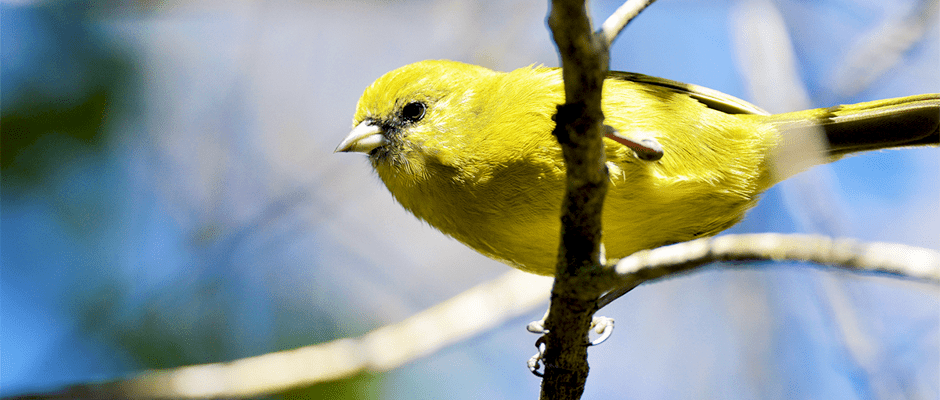Share this article
Hawaiian honeycreepers on the verge of collapse
Hawaiian native forest bird species such as the endangered akikiki (Oreomystis bairdi) and ‘akeke‘e (Loxops caeruleirostris) occupy specialized habitat on the Alaka’i Plateau on the island of Kauai.
However, these birds are on the verge of collapse due to range decline and threats from disease and invasive species. A recent study published in Science Advances estimates approximately 468 akikiki and 945 ‘akeke‘e remained in 2012.
As part of the study, researchers examined forest bird data, which volunteers collected on the island of Kauai from 1981 to 2012. Most of the range-restricted forest bird species are limited to an area of 64 kilometers.
“What we found was that in recent years, there have been dramatic declines,” said lead author Eben Paxton, an avian ecologist with the U.S. Geological Survey’s Pacific Island Ecosystem Research Center and a member of The Wildlife Society. In fact, over the last three decades or so, there has been a 94 percent decline in the outermost area of the birds’ range and a 64 percent decline in their core area. Further, the team found the declines have accelerated between 2000 and 2012 by up to as much as 6 percent.
“We can’t predict the future,” Paxton said. “[But] if we project these trends into the future, we would expect to see multiple extinctions in the coming decades.”
The main threat that impacts these birds appears to be diseases such as avian malaria, spreading throughout the birds’ habitat in more recent years. Avian malaria is spread by the southern house mosquito that needs warm temperatures to be able to thrive. Although high elevations where the birds are found were historically too cool for mosquitoes, increasing temperatures in recent years have allowed the insects to thrive.
Nonnative vegetation and rapidly spreading invasive species also affect bird populations. These changing threats are likely influenced by climate change, Paxton says.
But, according to Paxton, there are ways to manage the threats for these endangered and threatened birds. Since they also face habitat degradation, protecting forests is important for maintaining their current habitat. In addition, there are ongoing efforts to control rats and other invasive species around core breeding areas.
As for tackling avian malaria, researchers are exploring innovative ways to control the disease-spreading mosquitoes such as releasing sterile males or genetically engineered fertile males that won’t produce viable offspring.
Although the focus is now on Kauai, Paxton notes that the situation should serve as a warning for the other Hawaiian islands where similar events can impact forest birds in the future.
“This is a tragic story, but I’d like to believe we could give it a happy ending if we use the conservation tools we have available to us, like the vector control issues,” Paxton said. “If we have the resources, we can turn this trend around and have a happy ending.”
Header Image: The native Hawaiian ‘akeke‘e bird perches on a branch. ©Jim Denny








